Ryan Hall's Blog, page 215
September 29, 2016
Al Hernandez Running His 100th Rock ‘n’ Roll Marathon Series Event in San Jose
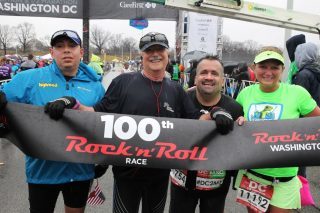
Al Hernandez, pictured in the blue jacket on the left, is running his 100th Rock 'n' Roll running event this weekend at the Rock 'n' Roll San Jose Half Marathon. Photo: PhotoRun.net
In the early 1990s, Al Hernandez was a pretty fast runner, one who was consumed by the clock. He ran a 1:13 half marathon and 2:31 marathon, his body fat once measured 5.38 percent and he kept meticulous records of his VO2 max printouts.
“I wanted to bury the people next to me,” he says. “I wanted them to suffer.”
Today, he’s a John Bingham disciple, a runner of the masses, a man who purposely tried to finish last one year in the half marathon at Rock ‘n’ Roll Las Vegas. He failed to finish last but succeeded in dawdling, requiring just shy of five hours.
“It’s OK to finish last,” says Hernandez.
RELATED: Rock ‘n’ Roll Las Vegas Half Marathon Course Preview
Come Sunday at the Rock ‘n’ Roll San Jose Half Marathon, Hernandez will run his 100th Rock ‘n’ Roll Marathon Series event. He’s only the third person in the 19-year history of the series to accomplish that feat. It will also be his 300th half marathon.
“Who knew?” says the 44-year-old Sacramento food and wine editor.
As a Rhode Island teenager, Hernandez barely missed qualifying the Foot Locker Cross Country Championships. He dreamed big, wanting to go to the Olympics. By 1992, he realized that dream wouldn’t become reality and admits, “I was devastated. I was completely destroyed.”
The 5-foot-9 lithe runner who once weighed 129 pounds let his body go. By 1996, living in the San Diego County coastal community of Leucadia, Hernandez weighed 195 pounds.
A friend told Hernandez to meet him one weekend morning.
Turns out, the meeting place was the start of a 5K. The friend, who was not a runner, wanted Hernandez to help him through a 5K. Hernandez showed up in jeans.
“At the start line,” says Hernandez, “I hated the guy.”
But he ran and walked beside his friend, who struggled, needing 48 minutes to finish.
“I watched him go through this myriad of emotions and go through his personal demons in the course of the 5K,” recalls Hernandez. “He was huffing and puffing the last mile until he saw the finish line, then he decided to sprint.”
Observing the scene around him, Hernandez was amazed.
“Man, was I truly jealous of all these people that were truly happy on the course because I had never experienced that. All these people laughing and smiling, telling jokes, some dressed in costumes.
“I was laser focused when I ran. The idea of running for fun never occurred to me. It just didn’t.”
Hernandez began coaching his friend, who would cut his 5K time in half.
Five years later, Hernandez was living in Santa Monica and another friend wanted to cross a marathon off his Bucket List. Hernandez committed to not only training the friend but run with him. The 26.2-miler they selected: the second Rock ‘n’ Roll San Diego Marathon.
Hernandez took in the entertainment – the bands, cheerleaders, the Jimmy Buffet Parrotheads at the “Margaritaville” aid station.
“It was the craziest thing I’d ever seen,” Hernandez recalled of the Parrotheads. “I wanted to stop and stay with them.”
At the time, the Rock ‘n’ Roll Marathon brand was in its infancy. Until then hard core marathoners—3 hours, 30 minutes seemed to be the dividing line – snubbed their noses at joggers. Ironically, on an overcast morning when Kenya’s Philip Tarus ran the fastest marathon ever west of the Mississippi River, Hernandez felt the shifting change in attitude.
“For the first time,” said Hernandez, “I felt the running community was all inclusive regardless of how fast you were or how slow you were.”
RELATED: The 2016 Rock ‘n’ Roll Las Vegas Half Marathon Finisher Medal Spins and Glows
That was Hernandez’s first Rock ‘n’ Roll event. Sunday in San Jose, he runs his 100th.
All but one of his Rock ‘n’ Roll races have been stateside. His lone international race was Madrid.
He lists San Diego as his favorite Rock ‘n’ Roll site. Said the food and wine editor, “Not only is it a great food city, you also have everything from sports teams, hiking. It’s such a diverse place.”
San Jose and New Orleans are his favorite Rock ‘n Roll courses.
“Flat as a pancake,” he said.
His running passion helps with what he dubs an “occupational hazard,” eating fantastic food, and sipping wine and beer across the country.
“Running’s a way for me not to weigh 500 pounds,” said Hernandez, who weighs 185 pounds.
As for his Rock ‘n’ Roll future, Hernandez doesn’t plan on slowing down.
“Do I plan on getting to 200?” he asked rhetorically.
Pausing for a millisecond, he said, “Probably.”
RELATED: Snoop Dogg Will Headline 2016 Rock ‘n’ Roll Las Vegas Races
The post Al Hernandez Running His 100th Rock ‘n’ Roll Marathon Series Event in San Jose appeared first on Competitor.com.
Video: Sprinter Usain Bolt Races James Corden and Owen Wilson
James Corden, host of The Late Late Show, challenges 9-time Olympic gold medalist and 100-meter dash world-record holder Usain Bolt, actor Owen Wilson and The Late Late Show staff to a 100-meter race in the CBS Television City parking lot to find out who is truly the world’s fastest man. Check out this hilarious video!
The post Video: Sprinter Usain Bolt Races James Corden and Owen Wilson appeared first on Competitor.com.
September 28, 2016
Video: Death Cab for Cutie’s Ben Gibbard is a Trail Running Rocker
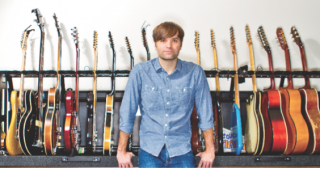
Ben Gibbard is the frontman for American alternative rock band “Death Cab for Cutie”, he also happens to love trail running. Salomon TV linked up with him for a week during DCFC’s 2015 U.S. tour and got to know a bit more about his passion and love for the trails and music.
RELATED: 36 Celebrities (and Other Notable People) Who Run
The post Video: Death Cab for Cutie’s Ben Gibbard is a Trail Running Rocker appeared first on Competitor.com.
Boston Marathon Currently Announcing 2017 Race Participants

The women's field starting the 2015 Boston Marathon. Image by PhotRun.net
The Boston Athletic Association (BAA) is in the process of notifying applicants of their acceptance into the 2017 Boston Marathon. In keeping with recent editions of the historic races, the fastest qualifiers were allowed to register first. The 121st Boston Marathon will be held on Monday, April 17, 2017 and will mark the 32nd consecutive year that the event will have John Hancock Financial as its principal sponsor.
“To qualify and ultimately participate in the Boston Marathon is the pinnacle moment for a vast number of runners,” said Tom Grilk, BAA’s Executive Director. “To inform those who have qualified that there is not enough space for everyone in the field is tremendously difficult. The entire BAA organization has worked hard to ensure a fair registration procedure that gives runners who have qualified the best opportunity to enter the Boston Marathon.”
The field size for the 2017 race has been capped at 30,000 official entrants. More than 80 percent of the field will be comprised of athletes who have met the qualifying standards. The balance will consist of invitational entrants, many of whom run for local charitable organizations. Since 1989, the race has raise more than $264 million for charity.
Qualifiers for the 2017 race who were 2:09 or faster than the minimum qualifying time for their age group and gender were able to secure an entry. Of the 26,171 applications submitted, 23,214 applicants have been accepted to date or are in the process of being accepted, pending verification of their qualifying performance.
That means 2,957 applicants who met the minimum qualifying standard but had relatively slower times were turned away. Details of the registration process are available online.
Here’s the BAA’s breakdown of the recent qualifying times:
4,357 qualifiers met their qualifying time by 20 minutes, 00 seconds or faster.
7,105 qualifiers met their qualifying time by 10 minutes, 00 seconds or faster.
6,845 qualifiers met their qualifying time by 05 minutes, 00 seconds or faster.
4,497 qualifiers met their qualifying time by 02 minutes, 09 seconds or faster.
410 qualifiers were accepted based on finishing 10 or more consecutive Boston Marathons.
Qualifiers needed to best the standard by 2:28 or faster for their age group and gender to get into the 2016 race; 1:02 for the 2015 race; and 1:38 for the 2014 Boston Marathon.
The names of runners who have been accepted for the 2017 edition will be posted on the Entrants page of the BAA’s website.
The post Boston Marathon Currently Announcing 2017 Race Participants appeared first on Competitor.com.
September 27, 2016
The Red Bull 400: A Gut-Busting Running Race Up a Ski Jump
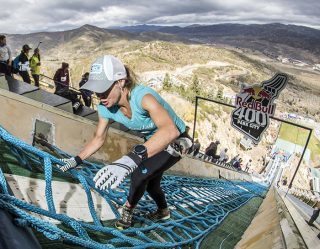
On Sept. 24 at the Utah Olympic Park in Park City, Utah, more than 650 hardy athletes and weekend warriors took on the ridiculously difficult challenge of running 400 meters up an Olympic ski jump. The races started at the lofty elevation of 6,870 feet above sea level, which only added to the lung and leg burn as competitors ran, crawled and struggled up the 134-meter ski jump landing hill and in-run ramp. As you scroll through the images below, you can feel the anguish these competitors put themselves through to reach the top. Tom Goth, a champion ski mountaineering racer from Salt Lake City, was fastest of the day, winning the elite heat in 4 minutes, 5.2 seconds, about 10 seconds ahead of runner-up John Tribbia (4:15.5), a former U.S. Mountain Running Team member from Salt Lake City. U.S. Olympic cross country skier Liz Stephens (4:52.9) was the fastest woman to the top for the second straight year, holding off a hard-charging Megan Foley (5:37.6). This crazy endurance test also featured CrossFit heat, in which 2014 CrossFit Games winner, Camille Leblanc-Bazinet, took first in 6:48.0, while the co-ed relay was won by Team Provo Elite (Sean Adams, Dillon Goodman, Ian Mcgetrick, Max Scheible) in 2:36.3. Proceeds for the event benefitted the local ski jumping and cross country ski programs of the Park City Nordic Ski Club. (Full results)
Photo Gallery
1 of {count}
Back to Start
View Larger Image
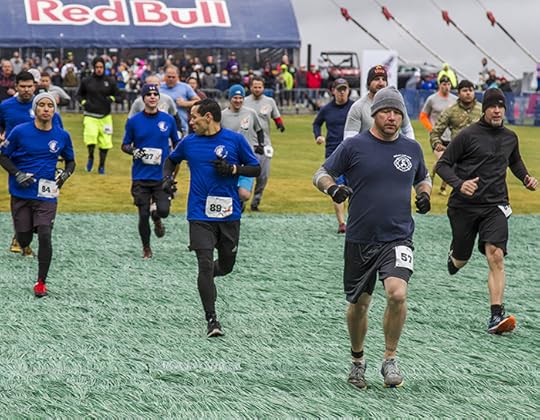
2016 Red Bull 400
View Larger Image
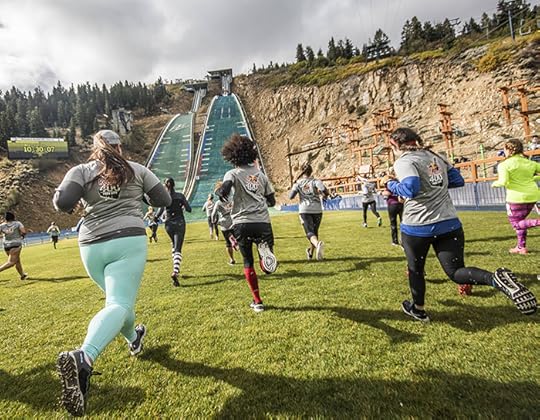
2016 Red Bull 400
View Larger Image
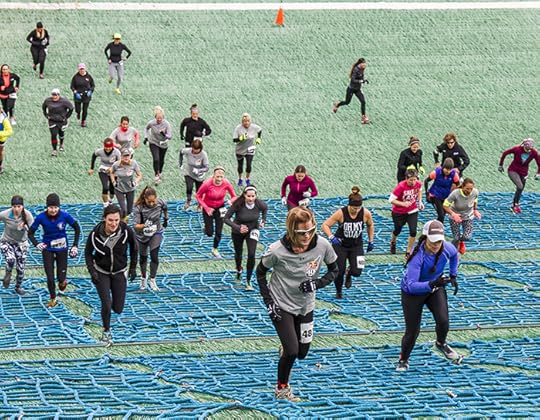
2016 Red Bull 400
View Larger Image
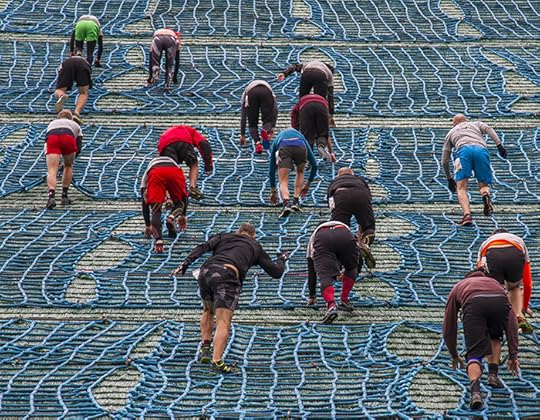
2016 Red Bull 400
View Larger Image
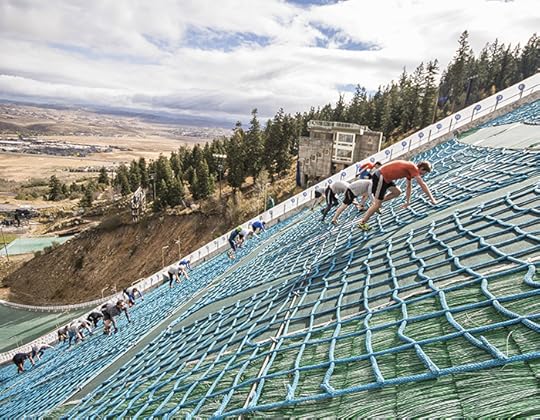
2016 Red Bull 400
View Larger Image
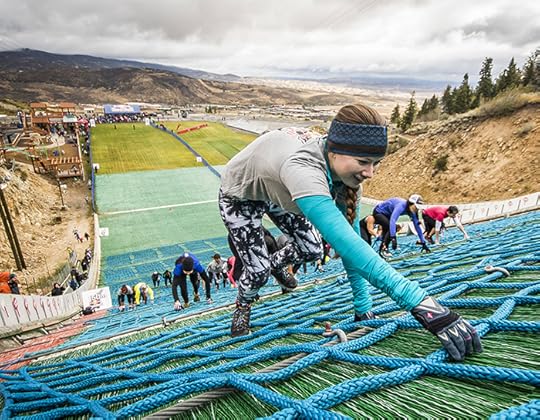
2016 Red Bull 400
View Larger Image
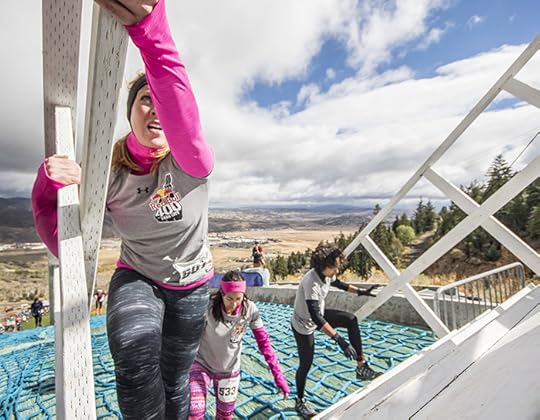
2016 Red Bull 400
View Larger Image
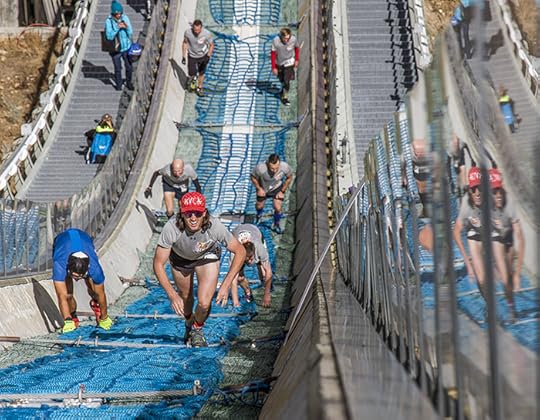
2016 Red Bull 400
View Larger Image
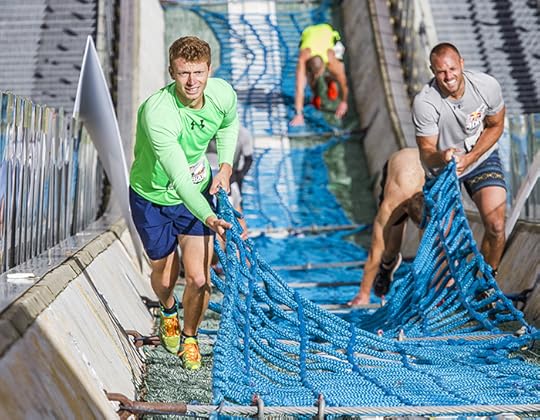
2016 Red Bull 400
View Larger Image
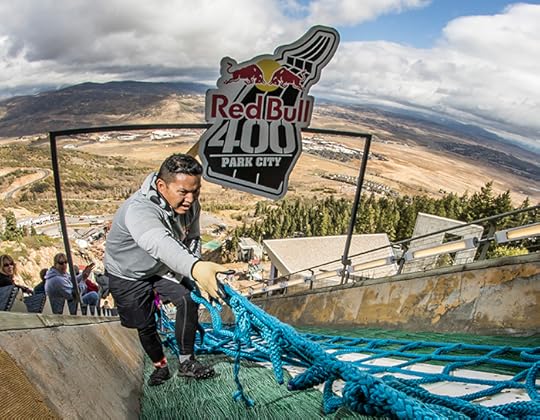
2016 Red Bull 400
View Larger Image
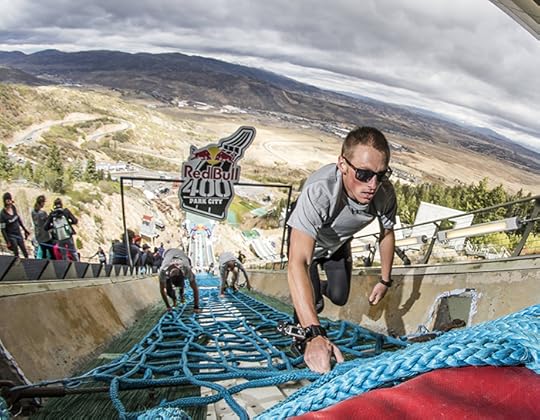
2016 Red Bull 400
View Larger Image

2016 Red Bull 400
View Larger Image
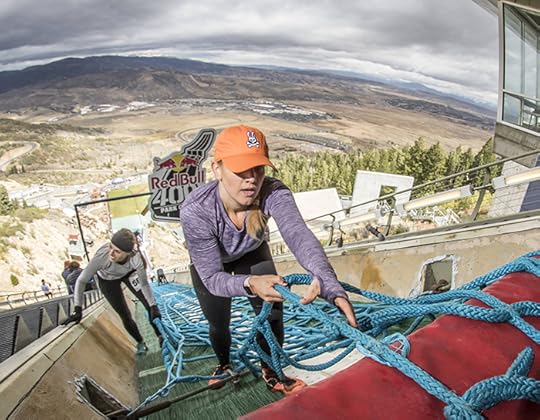
2016 Red Bull 400
View Larger Image
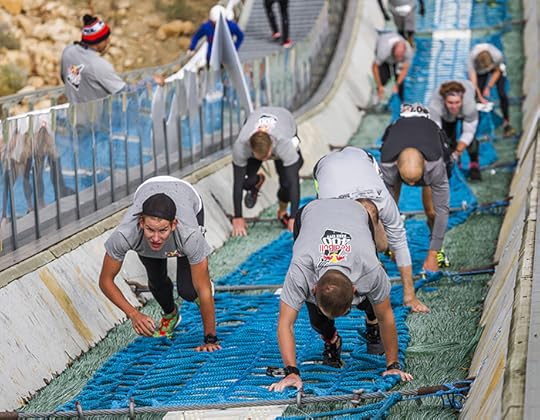
2016 Red Bull 400
View Larger Image
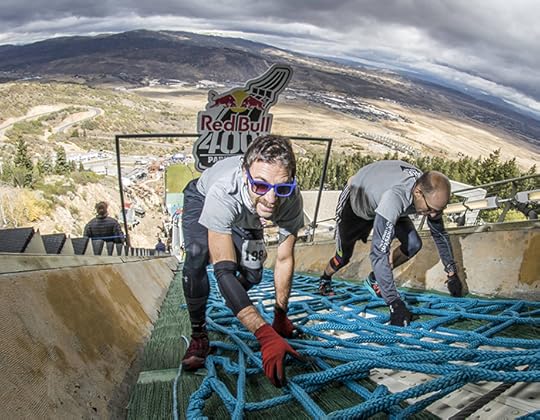
2016 Red Bull 400
View Larger Image
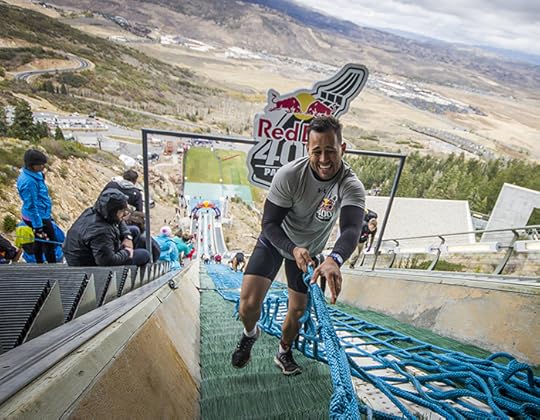
2016 Red Bull 400
View Larger Image
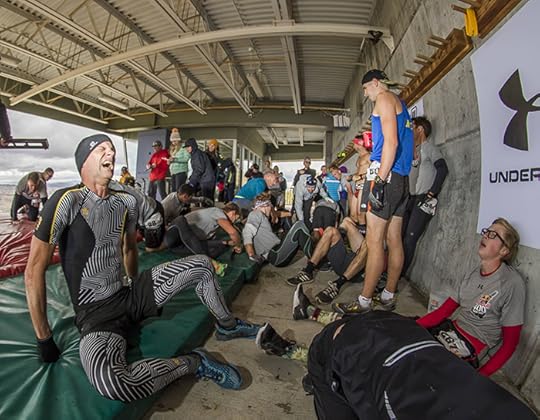
2016 Red Bull 400
View Larger Image
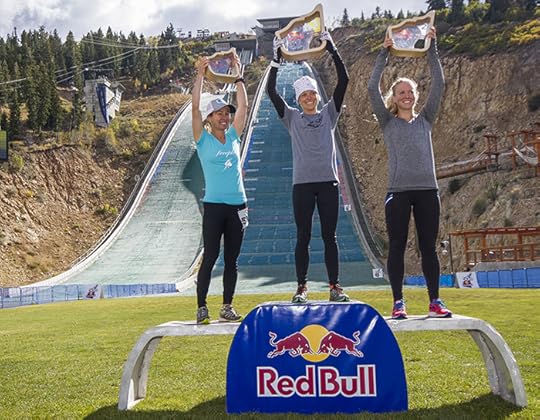
2016 Red Bull 400
View Larger Image
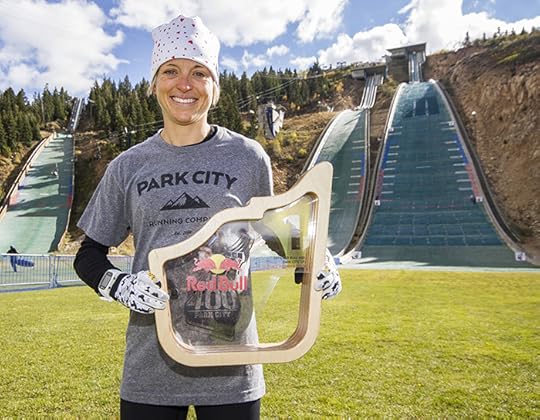
2016 Red Bull 400
View Larger Image
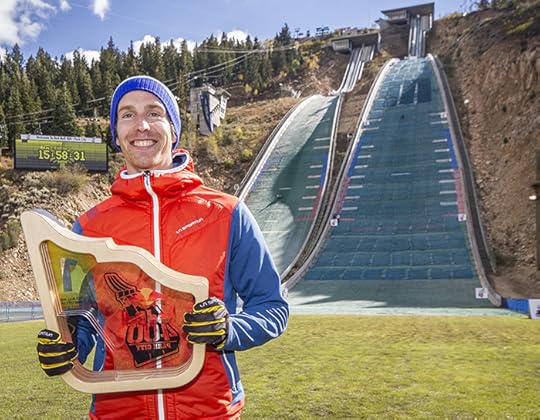
2016 Red Bull 400
View Larger Image
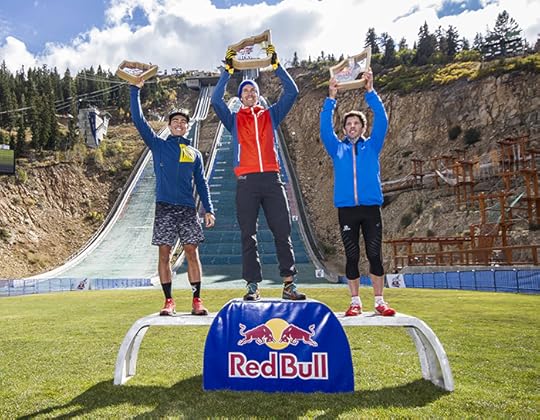
2016 Red Bull 400

More Galleries
The post The Red Bull 400: A Gut-Busting Running Race Up a Ski Jump appeared first on Competitor.com.
September 26, 2016
Fall 2016 Trail Running Shoe Buyer’s Guide
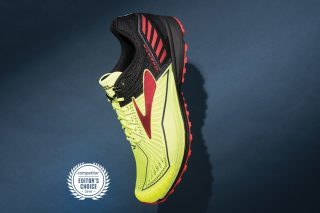
The 11 best new shoes for running off-road this fall.
Shoe weights listed in this review are based on men’s size 9.0 and women’s size 7.0.
Photos: Oliver Baker
RELATED: Fall 2016 Road Running Shoe Buyer’s Guide
Brooks Mazama, $140
For years, Brooks offered a couple of trail shoes aimed at training, but it didn’t have a true speed merchant intended for fast racing. That all changes with the Mazama, which is part trail shoe, part badass rally car. It’s a stable-riding shoe that serves up amazing proprioceptive “feel” for the trail while still having enough foam and protection (including a forefoot plate) against roots, rocks and other obstacles. An interior booty keeps the foot locked down and the tongue in place, while the exterior mesh is durable enough to handle the trails. It’s light, agile and energetic, yet it’s willing to be a true mountain mauler in short doses. The sticky rubber bi-directional outsole offers great traction and allows this shoe to be versatile enough to tackle just about any kind of terrain from roads to gnarly technical rocky routes. Overall, it was the hands-down favorite of our wear-testers.
Weights: 9.2 oz. (men’s), 7.7 oz. (women’s)
Heel-Toe Offset: 6mm; 23mm (heel), 17mm (forefoot)
The post Fall 2016 Trail Running Shoe Buyer’s Guide appeared first on Competitor.com.
Colorado’s Golden Leaf Race Canceled, But Runners to Get 2nd Chance
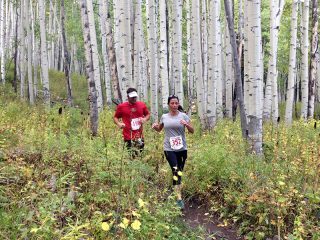
A scene from the Golden Leaf Half Marathon in 2013. Photo: Brian Metzler
What do you do if you’re a race director and bad weather is looming? It’s certainly a tough call, especially if you have 1,000 runners eager to race in one of the country’s most iconic half marathons and the event is run mostly on singletrack trails.
That’s what the organizers of the popular Golden Leaf Half Marathon in Colorado were faced with last weekend as snow and near-freezing temperatures swept into the Aspen area on Friday. The Golden Leaf is one of the most popular trail races in Colorado and, with about 1,000 participants spread over six starting waves, it’s one of the largest trail races in the U.S.
The 13.1-mile race is held primarily on the singletrack Government Trail between Snowmass Village and Koch Park in Aspen. It takes runners through the terrain of two ski resorts, primarily on land under permit from the U.S. Forest Service.
The race is typically held on a Saturday in late September during the peak of fall colors when the aspen trees are glowing in a bright yellow hue, something that adds to its attraction as a destination race for runners from Denver, Boulder, Colorado Springs and other locales farther afield.
Race organizers had informed participants via email that the event was still on as of late Friday night, but that they were keeping an eye on the situation. The official announcement of the cancelation was made early Saturday morning, a few hours before the 8:30 a.m. start time.
“We are concerned for the safety of our racers, volunteers and staff,” race organizers posted on the event website Saturday morning. “This is a difficult decision and we know it is disappointing to our racers, but we believe it is the best decision for the majority of racers. We hope you understand.”
Naturally, a lot of runners were very upset, especially because many booked hotel stays in the Aspen area for the weekend. Despite some cold, snowy weather across Colorado and Utah, several other races were held—including the inaugural Silverton Double Dirty 30 100K in Silverton, Colo., and The North Face Endurance Challenge races in Park City, Utah—but ultimately the decision to cancel the Golden Leaf was based on both the cold weather—it was 34 degrees in Snowmass Village early Saturday morning—and the potential for slippery, muddy and hazardous trails.
By the time the race was supposed to start, it was still cool with light snow flurries in both Snowmass and Aspen. Although the conditions improved considerably throughout the day, race officials believed they made the right decision.
“My stomach was in knots all day Saturday,” said Paul Perley, general manager of the Ute Mountaineer outdoor shop in Aspen, which co-organizes the race with the City of Aspen. “Most people have been supportive, but there are people upset and disappointed, and I get it. They wanted to run the race. But I’d rather hear that than knowing we had people getting injured out on the course.”
The Government Trail wasn’t officially closed on Saturday, so some runners opted to run all or part of the course anyway. However, several runners who ran the course on their own said the trails were still wet, slippery and muddy and could have presented safety concerns.
RELATED: America’s Most Scenic Trail Running Races
As in the case with virtually all races in the U.S., refunds are not offered in the result of cancelations—especially when the reason for canceling is tied to weather or safety concerns. Participants are made fully aware of those stipulations on the event website and in the race waiver and that the $75 entry fee is non-refundable, Perley said.
The money was spent in advance on safety personnel, aid station supplies, a non-refundable contract with a timing company, portable toilet rentals and more, he said.
But, Perley said, the race organizers are working on a system that will allow runners who registered this year to register again next year, even though they’d have to pay the registration fee again. That’s a standard situation when races are canceled because of weather and was the case when the New York City Marathon was canceled in 2012 because of Hurricane Sandy.
“That’s hard for people to understand, I know,” Perley said.
Despite the less-than-ideal weather, event organizers went ahead with plans for the catered post-race lunch and raffle—which are known as being among the best post-race events in Colorado—at Koch Park late Saturday morning.
“It’s disappointing to find out it’s not happening, but I think they made the right decision,” said Todd Kube, a runner from Longmont, Colo., who was planning to run the race with his daughter, who had flown in from Seattle. “It’s a tough call. The trail conditions were pretty wet in several spots and sending 1,000 runners on wet and damp trails would have beat it up quite a bit.”
The Golden Leaf Half Marathon had only been canceled once before, in 2006 when a snowstorm buried the trails the day and night before the race.
Eddie Metro, a runner from Boulder, Colo., was registered for the race but opted not to drive to Aspen on Friday once the forecast looked unfavorable. He didn’t have hotel reservations because he was planning to spend the night in his RV.
“I had been monitoring the weather since Wednesday. You do that in Colorado,” Metro said. “I saw what was on the way and had seen a few posts from people already there and in Crested Butte. I pulled the plug on going and stayed home and had a great weekend of cycling instead.”
RELATED: The Pros and Cons of Waterproof Shoes
The post Colorado’s Golden Leaf Race Canceled, But Runners to Get 2nd Chance appeared first on Competitor.com.
Colorado’s Golden Leaf Trail Race Canceled, But Runners Will Get 2nd Chance

A scene from the Golden Leaf Half Marathon in 2013. Photo: Brian Metzler
What do you do if you’re a race director and bad weather is looming? It’s certainly a tough call, especially if you have 1,000 runners eager to race in one of the country’s most iconic half marathons and the event is run mostly on singletrack trails.
That’s what the organizers of the popular Golden Leaf Half Marathon in Colorado were faced with last weekend as snow and near-freezing temperatures swept into the Aspen area on Friday. The Golden Leaf is one of the most popular trail races in Colorado and, with about 1,000 participants spread over six starting waves, it’s one of the largest trail races in the U.S.
The 13.1-mile race is held primarily on the singletrack Government Trail between Snowmass Village and Koch Park in Aspen. It takes runners through the terrain of two ski resorts, primarily on land under permit from the U.S. Forest Service.
The race is typically held on a Saturday in late September during the peak of fall colors when the aspen trees are glowing in a bright yellow hue, something that adds to its attraction as a destination race for runners from Denver, Boulder, Colorado Springs and other locales farther afield.
Race organizers had informed participants via email that the event was still on as of late Friday night, but that they were keeping an eye on the situation. The official announcement of the cancelation was made early Saturday morning, a few hours before the 8:30 a.m. start time.
“We are concerned for the safety of our racers, volunteers and staff,” race organizers posted on the event website Saturday morning. “This is a difficult decision and we know it is disappointing to our racers, but we believe it is the best decision for the majority of racers. We hope you understand.”
Naturally, a lot of runners were very upset, especially because many booked hotel stays in the Aspen area for the weekend. Despite some cold, snowy weather across Colorado and Utah, several other races were held—including the inaugural Silverton Double Dirty 30 100K in Silverton, Colo., and The North Face Endurance Challenge races in Park City, Utah—but ultimately the decision to cancel the Golden Leaf was based on both the cold weather—it was 34 degrees in Snowmass Village early Saturday morning—and the potential for slippery, muddy and hazardous trails.
By the time the race was supposed to start, it was still cool with light snow flurries in both Snowmass and Aspen. Although the conditions improved considerably throughout the day, race officials believed they made the right decision.
“My stomach was in knots all day Saturday,” said Paul Perley, general manager of the Ute Mountaineer outdoor shop in Aspen, which co-organizes the race with the City of Aspen. “Most people have been supportive, but there are people upset and disappointed, and I get it. They wanted to run the race. But I’d rather hear that than knowing we had people getting injured out on the course.”
The Government Trail wasn’t officially closed on Saturday, so some runners opted to run all or part of the course anyway. However, several runners who ran the course on their own said the trails were still wet, slippery and muddy and could have presented safety concerns.
RELATED: America’s Most Scenic Trail Running Races
As in the case with virtually all races in the U.S., refunds are not offered in the result of cancelations—especially when the reason for canceling is tied to weather or safety concerns. Participants are made fully aware of those stipulations on the event website and in the race waiver and that the $75 entry fee is non-refundable, Perley said.
The money was spent in advance on safety personnel, aid station supplies, a non-refundable contract with a timing company, portable toilet rentals and more, he said.
But, Perley said, the race organizers are working on a system that will allow runners who registered this year to register again next year, even though they’d have to pay the registration fee again. That’s a standard situation when races are canceled because of weather and was the case when the New York City Marathon was canceled in 2012 because of Hurricane Sandy.
“That’s hard for people to understand, I know,” Perley said.
Despite the less-than-ideal weather, event organizers went ahead with plans for the catered post-race lunch and raffle—which are known as being among the best post-race events in Colorado—at Koch Park late Saturday morning.
“It’s disappointing to find out it’s not happening, but I think they made the right decision,” said Todd Kube, a runner from Longmont, Colo., who was planning to run the race with his daughter, who had flown in from Seattle. “It’s a tough call. The trail conditions were pretty wet in several spots and sending 1,000 runners on wet and damp trails would have beat it up quite a bit.”
The Golden Leaf Half Marathon had only been canceled once before, in 2006 when a snowstorm buried the trails the day and night before the race.
Eddie Metro, a runner from Boulder, Colo., was registered for the race but opted not to drive to Aspen on Friday once the forecast looked unfavorable. He didn’t have hotel reservations because he was planning to spend the night in his RV.
“I had been monitoring the weather since Wednesday. You do that in Colorado,” Metro said. “I saw what was on the way and had seen a few posts from people already there and in Crested Butte. I pulled the plug on going and stayed home and had a great weekend of cycling instead.”
RELATED: The Pros and Cons of Waterproof Shoes
The post Colorado’s Golden Leaf Trail Race Canceled, But Runners Will Get 2nd Chance appeared first on Competitor.com.
Run Smart, Record Negative Splits, Get Free Running Shoes
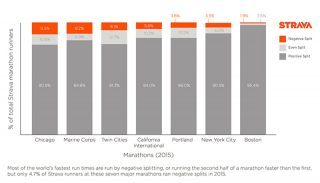
In what might be the ultimate bit of recreational running motivation ever created, Strava and New Balance are teaming up to reward runners who run negative splits in a marathon this fall with a free pair of shoes.
To earn a free pair of kicks in the Strava Back Half Challenge, all you have to do is run faster over the second half of a qualifying race than the first and share it on Strava. From there, runners can complete a submission form on the Strava blog to get their new pair of shoes. The campaign starts on Oct. 9 to coincide with the Chicago Marathon and Portland Marathon and concludes on Dec. 6 after the California International Marathon.
Through its data collected from its users, Strava reports that only 13 percent of marathoners in recent years have actually run negative splits. Strava’s analysis of six marathons reveals that only 3.6 percent of Strava athletes who ran the New York City Marathon and 6.3 percent of those who ran the Boston Marathon completed the second half of a race faster than the first half.
The post Run Smart, Record Negative Splits, Get Free Running Shoes appeared first on Competitor.com.
Video: An Epic Morning at the 2016 BurningMan Ultramarathon
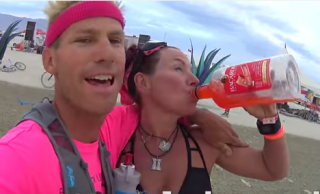
For the third straight year, Ryan Van Duzer, an accomplished runner, videographer and TV personality, documented his experience at the BurningMan Ultramarathon. It’s a wild and wacky 50K race held in early September during the annual Burning Man celebration of art, music, pop culture, partying and dusty togetherness in Nevada’s Black Rock Desert. At this year’s race, more than 200 people participated in typical Burning Man costumery, including Van Duzer, who sported a pink race kit and tutu. Check out his ridiculous and hilarious adventures in this inspiring video.
The post Video: An Epic Morning at the 2016 BurningMan Ultramarathon appeared first on Competitor.com.
Ryan Hall's Blog
- Ryan Hall's profile
- 21 followers



